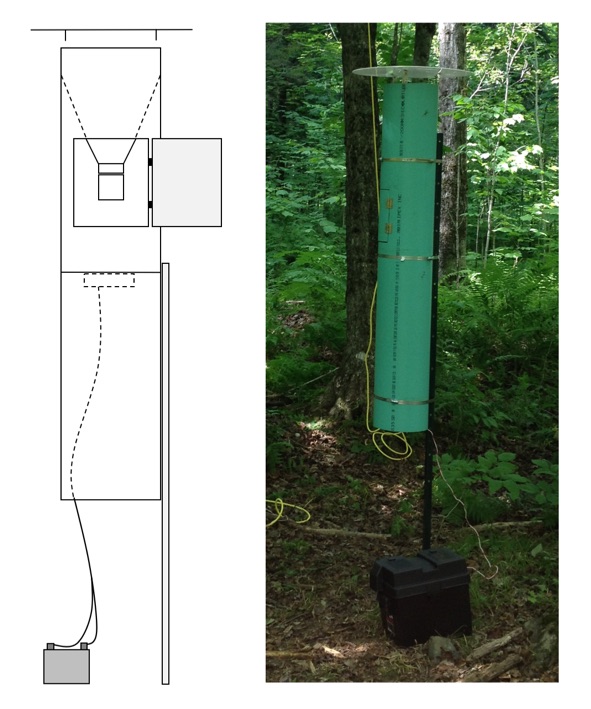
During my M.S. research, my advisor David Voegtlin gave me a set of medium-sized suction traps that he had developed and built for catching aphids. As I sorted hundreds of aphids, I was amazed at the diversity of other insects in the traps and vowed that I would one day take a closer look at it. One of the first things I did when I arrived at the University of Montreal, was to build my own set of “Voegtlin traps” and set them up along a 150 m transect in the forest of the University’s Laurentian Biological Research Laboratory. We sampled several summer weeks, with suction traps and small Malaise traps set up side by side to compare the efficacy of these two trapping methods.
Over the course of several subsequent years, a small army of undergraduate students sorted the insects in a single week’s worth of that material. One of them, Alexis Trépanier, spent two full semesters classifying the Hymenoptera into “Operational Taxonomic Units”, ending up with just shy of 200 OTUs! He, undergraduate Diptera-sorter Titouan Eon-Le Guern, master’s student computer analyst Vincent Lessard, PhD student Thomas Théry and I just published the results of this project in the journal Insect Conservation and Diversity.
Along with describing the Voegtlin suction trap in detail, we found that these traps were excellent at capturing tiny insects, especially small parasitoid wasps known as Microhymenoptera and the very diverse family Phoridae (true flies, Diptera). Not only are these traps great for species discovery generally, but we found that the ensemble of the insects that they caught was different for each trap along the transect, despite the fact that the traps were only 50 m apart. This suggests that there is a fair amount of insect community heterogeneity in the Laurentian forest.
This summer, we’ve placed three pairs of traps in similar habitat replicates. We’re hoping to find out if that community heterogeneity is more or less random throughout the forest, or if it is patchy, based perhaps on the surrounding vegetation. With any luck, there’ll be a follow-up post in a couple years.